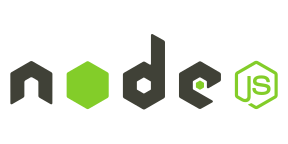Contents
Company provides exposure to learn and work with new tools , technology and automation. Office environment is connected, positive, challenging, trusting, collaborative and progressive. Refactoring Is the process of changing the code to make it better. TDD is extremely focused, allowing no unnecessary code to be written. Basically, it makes sure every new feature is in accordance with desired system behavior.
They predict the user’s requirements, determine the code to write, and use different test cases. Consequently, they make sure software development advances on the correct path and ultimately boosts the overall productivity of the software development team. You can choose any of these test practices after taking into account the requirements of business and end users, and the anticipated outcomes. It extends till the designed code fulfills the acceptance criteria.
- Actually it is a development practice where the developers are involved in it.
- Behavior-Driven Development is an Agile software development process heavily influenced by TDD and DDD (Domain-driven development).
- Scenario Outline – is used when the same scenario needs to be executed with multiple data sets.
- Although it is a programming language, it is often referred to as “business readable” as the “code” is meant to sound like plain language (English or any of over 37 other spoken languages!).
- It’s important to note that BDD and TDD aren’t mutually exclusive — many Agile teams use TDD without using BDD.
- Reduces the total amount of work that might be required for reworking the code.
4 levels of software testing every app should go through before launch Thorough testing is the only way to ensure that apps work as intended. We cover 4 software testing levels your app should go through from planning to release. Our software development experts will choose the right development method for your project and execute it to perfection. The goal of this phase is to have acceptance tests run constantly to make sure criteria are met and that new behaviors fit the system. There are 3 development methods that integrate quality into software development.
What is the example of TDD and BDD?
Most developers are familiar with test-driven development, or TDD, but behavior-driven development, or BDD, is often misunderstood. The reality is that both of these approaches have benefits and drawbacks to consider. These behavior examples are described in a simple “shared language” such as English or a domain-specific language for writing behavior scenarios, such as Gherkin.

Enrique has a strong background in Testing Tools, API testing strategies, performance testing, Linux OS and testing techniques. Enrique loves to share his in-depth knowledge in competencies including, Selenium, JavaScript, Python, ML testing tools, cloud Custom Logistics Software Development computing, agile methodologies, and people Management. BDD is an approach that involves managers, testers, developers, etc., in the whole process. The BDD approach accords technical and non-technical teams for the collaboration of knowledge and ideas.
This stage of ATDD practice discusses the customer’s requirements. Simply put, it analyzes the end product which the customer expects from the development. To understand their expectations, testers and developers conduct a meeting with the clients/owners/business stakeholders of the product. They comprehensively discuss all the specifications and needs of the proposed feature. In this blog, we will explore the usefulness of each of these testing practices.
In TDD, the tests will fail when a functionality doesn’t exist. But as new code is written , the system will evolve until the complete feature is obtained, at which point the test will pass. In comparison, BDD testing looks at a system’s behavior to understand how it will behave when certain conditions are realized.
Difference between BDD vs TDD in Software Engineering
The BDD vs. TDD decision depends on the individual organization and the application. If a team is already doing TDD, they may want to experiment with BDD by using it for a small feature to see how it adds value https://bitcoin-mining.biz/ to their process. The software development world suffices a host of debates, and the BDD Vs. TDD is one of those that continues to rage on. You will follow the below steps that imitate the TDD approach.

To better understand each development method and to see which suits you, here’s a table comparing them. Now that we’ve described all three development methods let’s take a look at how they compare. As with the previous 2, let’s take a look at good and bad aspects of this development method.
What Are the Main Differences Between TDD and BDD?
The hope in BDD is that the tests are actually useful in showing that the system meets the requirements. Your comment is very sensible given what users are generally fed about BDD and TDD and certainly in the context of “popular tools” (e.g. languages and their dev/delivery systems). What really helped me “get” BDD was when I saw that it was really Hoare-logic, which is the basis for Design-by-Contract. Once I saw that, I quickly realized that BDD has a pure-code version that can be applied to any code module at any level. It can also be applied at a human-level for human-level testing (e.g. QA/QC, Biz-analysis, alpha-testing, beta-testing, and even User Doc writing, etc.). Many tech experts would say that BDD is better than TDD and vice versa.

Once the test code is written and validated, the developer executes the required features. Note that the developers would only implement the features after carrying out discussion and distilling and running the tests. ATDD considers the user acceptance test criteria as the foundation for development. Therefore, customer needs are the central focus of the entire development process of ATDD. It focuses on the end user’s need at each stage of development because it impels the developer to contemplate from a customer’s perception. This stage involves exploring and discussing the user story.
Since test scripts are written in programming languages, it is hard for a business analyst or test owner to verify the test scripts. The development team runs these automated test scripts against what is currently developed and the tests fail, as they should since none of the features have been implemented yet. Test-driven development has been widely adopted by Agile development firms and there are many different tools to help teams get on the same page. Unfortunately, there are fewer tools for behavior-driven development since it involves communication between business and technical teams.
BDD can be defined as a type of software development procedure that helps in defining user behavior before writing the functional elements of the code or even the automation code/scripts. This technique is also utilized during Agile project development, as it can ensure a shippable product at the end of the team Sprint. TDD can be defined as a type of software development process which involves writing automated test cases before writing the various functional segments of the code. Such a method is highly popular when it comes to Agile methodologies because the process can quickly deliver a shippable product at the Sprint cycle. This technique tries to answer a simple question – Is the code valid? The primary purpose of this practice is to modify or write a new code only when the tests fail.
Why Impact Sourcing Matters for Your Business
Although it is a programming language, it is often referred to as “business readable” as the “code” is meant to sound like plain language (English or any of over 37 other spoken languages!). The official Gherkin language is maintained by Cucumber , although most other BDD frameworks also leverage Gherkin to some extent. Behavior-driven development is based around the same concepts as TDD, but one step higher, focusing on functional testing of the expected behaviors of an application – hence its name. In this way, BDD is often considered an extension of TDD, helping to test whether or not all the units work together as expected to form a whole application. Understanding how these methods work can help developers and other individuals involved in software development determine which testing strategies best serve their purpose. Depending on the kind of project and the results it aims to achieve, a suitable method can be deployed to meet specific requirements in the most efficient ways.
Over the last couple of years, the process of software development has moved from following a Waterfall approach to Agile methodology. For instance, the development team might use BDD to bring higher levels of tests confirming the applications’ behaviour. When implementing specifics, developers may choose to create specific unit tests by ensuring the strength of components as these components would be reused across any application. The combination of TDD and BDD frameworks can add more value to the software development process.
BDD enables all the stakeholders to be on the same page with requirements which makes acceptance easy, as opposed to TDD. The development team can then refactor and organize the code to produce a tested deliverable at the end of the sprint. A developer, based on requirement documents, writes an automated test case. Refactoring refers to modifying the code without changing its main functionality or behavior. Selenium is a testing framework, while Cucumber is a Behavior Driven Development tool.
TDD and BDD: The Similarities
In this method, an application is designed and documented around the behavior a user would expect to experience when interacting with it. The size of the team required for managing the ATDD development is small. The reason is this development takes place in multiple small iterations. Evidently, smaller teams are experienced and easy to build. They own the skills specific to the ATDD development process.